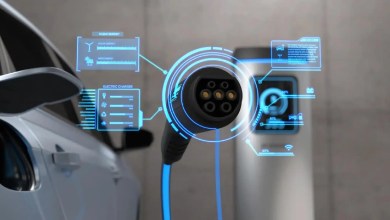Generative AI: Exploring the applications and architecture

AI generates music, visuals, and even poetry. Have you ever thought about how it creates all this content? It is a generative AI that is behind all these beautiful creations. This technology trains machines to produce new and original content by mimicking human intelligence.
The leading businesses have already started employing generative AI to streamline their operations. But many businesses didn’t even give it a try. If you’re one of them, keep reading! Gen AI is going to revamp the future of experimentation and innovation.
In this article, we have explicitly explained the architecture of generative AI along with its extraordinary applications. Let’s start with the basics!
What is Generative AI?
Generative AI is a branch of AI. It focuses on creating new, human-like content based on the nature of inputs. This innovative technology has extensive relevance with companies specializing in generative AI development services. These services are bringing Gen AI’s amazing capabilities to life. Gen AI’s content includes sounds, images, text, animations, and much more.
Generative AI models employ neural networks. These models identify the existing data’s patterns and structures to create new content. One of the top features of Gen AI models is the ability to use different learning approaches for training. These approaches are unsupervised and semi-supervised learning.
It has enabled companies to use extensive data to generate foundation models. They use these foundation models as a foundation for AI systems that perform multiple tasks. The popular examples of foundation models are GPT-3 and Stable Diffusion.
Applications of Generative AI
Now, let’s explore the amazing applications of generative AI!
Personalized User Experiences
You know that every user of this century wants to get personalized services, whether they are medical or e-commerce services. It can’t be wrong to claim that personalization is the most desirable thing of the century. Generative AI is a technology that is best at providing personalized user experiences.
As mentioned above, it has generative AI models that understand the behavioral patterns of users to develop user-focused content and recommendations. Netflix is a popular example. It heavily relies on Gen AI to offer its users seamless, customized user experiences.
AI Chatbots for Customer Support
A few years ago, providing quality customer support was hard. It was difficult to understand the users’ needs, and more importantly, it was quite expensive to hire many professionals to help customers. However, after Gen AI, things are different.
Today, many companies use AI chatbots to help their customers quickly and efficiently. These chatbots work like virtual assistants and provide customer support services better than humans.
The chatbots talk to customers politely and solve their queries quickly. The best thing is their capability to work 24/7. Now, instead of sending emails, customers use websites or social media places to get in touch with companies. They use a live chat feature and get quick answers to their questions.
We suggest you hire a credible generative AI development company for your e-commerce brand. Their experts will develop an AI chatbot that specializes in providing user-friendly customer support services.
Drug Discovery
Generative AI has revolutionized the industry of drug discovery. According to a study, it costs $1.8 billion to discover a drug, which is extremely expensive.
But now, thanks to Generative AI! Scientists have been preparing medicines much faster with lower costs. Generative AI proved to be great news for the pharmaceutical industry. It is helping the industry to save money on finding new drugs.
Gen AI as a Personal Assistant
One of the top applications of generative AI for your business is using it as a personal assistant. You can use this technology to create the right response to your email. Moreover, Generative AI works as a personal assistant. It schedules you all week and gives you reminders accordingly.
So, you can enhance the efficiency of your operational workflows by using generative AI as your assistant. ChatGPT Chrome Integration is the best example. You can increase the quality of your writing tasks and automate workflows by integrating the ChatGPT extension in your Chrome.
AI Product Development
Moreover, when it comes to product design and development, generative AI is being used in different ways. It includes:
- Creating code for apps
- Creating design concepts
- Producing generative designs
- Creating product documentation
- Managing personalized user experience
- Managing new iterations and much more.
Product managers and Gen AI developers use AI technologies to autocomplete data for their product requirements.
Let’s take an example! A product developer can use different Gen AI tools to craft new code. Also, a product manager can automatically use AI tools to collect user feedback from different sources. This is how Generative AI can help in the product development lifecycle.
The Architecture of Generative AI

Generative AI depends on neural networks. These networks are computational models developed according to human intelligence. The following is the breakdown of the architecture of generative AI. Have a look!
Neural Networks: Generative AI works using neural networks. These neural networks are brain cells that manage all the information, which are like digital brain cells that handle information. Recurrent Neural Network (RNN) is a popular type of neural network for generative tasks.
Training Data: Generative AI learns from existing data. Generative AI developers train Gen AI models on a massive dataset.
Loss Function: Generative AI uses a loss function. It helps Gen AI tools to improve themselves.
Generative Models: Generative Adversarial Network (GAN) is a popular type of generative model. It has two neural networks. The generator produces realistic content. At the same time, the discriminator distinguishes between the produced and real content.
Training Process: This is how the training process of Generative AI works:
- The generator starts the process by creating content.
- The discriminator checks it and gives feedback.
- Then, the generator recreates the content according to the input.
- This back-and-forth process continues until the generator creates new and original content.
Sampling: Once trained, Generative AI starts creating new content according to its learned knowledge. For example, a generator can write entire articles, codes, or even music.
The Future of Generative AI
The future of Generative AI is bright. All businesses that have employed its potential are proof that Gen AI promises an innovative evolution. There will be more sophisticated and human-friendly developments. These developments will include an enhanced understanding of complex data to ensure user-friendly user experiences.
From art to medicine, its generative models can create realistic innovations. It has excellent research and development capabilities. This power of Gen AI will transform problem-solving and creativity. Generative AI will shape a future where machines will work alongside humans to create a happier world for all of us.
Final Remarks
Generative AI is the only technology that has the maximum number of applications. Whether it is healthcare, entertainment, or the banking industry, its neural networks can do wonders in all businesses. It has extensive potential, so ethical considerations of AI should also be addressed by businesses. Always hire generative AI development services that offer ethical AI services and have a proven portfolio of bringing innovations to businesses.





